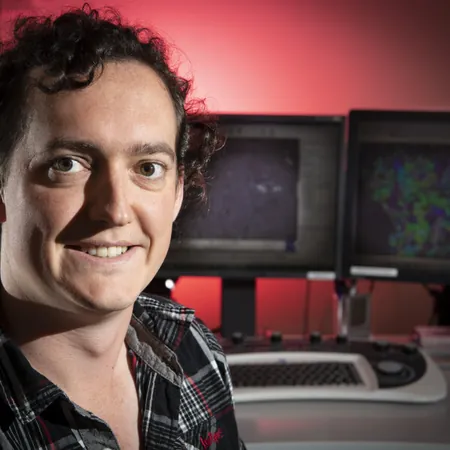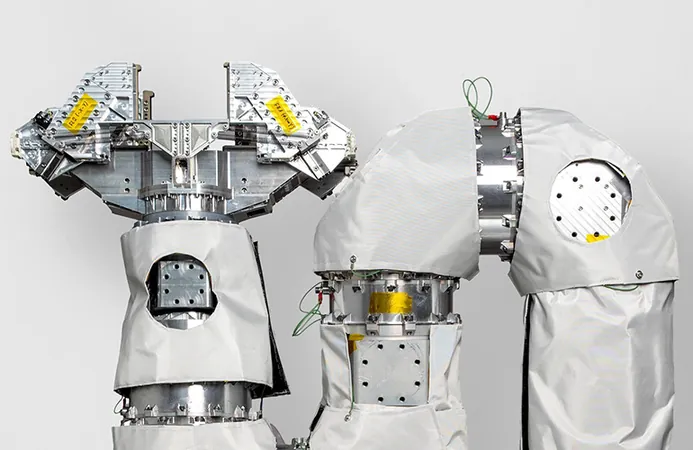
Revolutionary SNAP Facility Set to Revolutionize Materials Science for Space and Beyond!
2025-04-01
Author: Rajesh
Transformative New Research Initiative
The University of Glasgow is launching a transformative new research initiative that promises to reshape our understanding of materials at the atomic level, impacting everything from pioneering space exploration to the latest advancements in quantum technology.
Funding and Importance of SNAP
Thanks to a significant £5.3 million grant from UK Research and Innovation’s Engineering and Physical Sciences Research Council (EPSRC), the Space Nanomaterials Atom Probe (SNAP) will bring the first dedicated atom probe tomography (APT) facility to Scotland, marking one of only six such facilities across the UK. This cutting-edge laboratory will uniquely focus on solving the materials challenges faced in the field of space science.
What is Atom Probe Tomography?
Atom probe tomography is an innovative technique that breaks down materials atom by atom. It uses an ultra-precise laser to extract individual atoms from samples, allowing researchers to construct intricate 3D atomic-scale models. This unparalleled insight is essential for designing materials capable of enduring the harsh environments of space—including extreme temperatures, vacuum conditions, and high levels of radiation.
Future Operations and Applications
Set to be operational by 2028, SNAP will significantly contribute to the development of next-generation materials for satellites, spacecraft, and habitats on the Moon. But the implications of this revolutionary facility extend far beyond space. It will also be pivotal in advancing research for industries in semiconductors, quantum computing, and energy storage, among others.
Expert Insights on SNAP's Impact
Dr. Luke Daly, who heads the project from the University of Glasgow’s School of Geographical & Earth Sciences, underscores the significance of this advancement: “With SNAP, we gain unparalleled insight into how materials function at the atomic level. This facility not only aims to create stronger, more resilient materials for space missions but also strives to push the frontiers of research in various high-tech sectors.”
Co-investigator Dr. Paul Bagot from the University of Oxford reiterated the broader impact of the SNAP project, stating, “This facility represents a major leap forward for the UK research community. It will enable us to investigate atomic-level changes that significantly influence material performance across multiple scientific disciplines.”
Strategic Importance of SNAP
Highlighting the strategic importance of SNAP, Professor Eric Yeatman, Vice Principal and Head of the College of Science & Engineering, emphasized the role the facility will play in cementing the University of Glasgow's position as a leader in advanced materials research: “SNAP adds to our rapidly expanding suite of high-tech analysis and fabrication capabilities, ensuring we remain at the forefront of scientific innovation.”
Glasgow’s Expertise in Planetary Science
In addition, the SNAP facility will build on Glasgow’s existing expertise in planetary science. For instance, Dr. Daly previously utilized APT to analyze fragments from ancient asteroids, providing insights into the origins of Earth's water. As we step into the future, this advanced technique will not only support upcoming space missions but is also poised to drive new technological breakthroughs that could alter the landscape of multiple industries.
Conclusion
Discover how the SNAP facility will revolutionize research and technology in the coming years! 🛰️✨





 Brasil (PT)
Brasil (PT)
 Canada (EN)
Canada (EN)
 Chile (ES)
Chile (ES)
 Česko (CS)
Česko (CS)
 대한민국 (KO)
대한민국 (KO)
 España (ES)
España (ES)
 France (FR)
France (FR)
 Hong Kong (EN)
Hong Kong (EN)
 Italia (IT)
Italia (IT)
 日本 (JA)
日本 (JA)
 Magyarország (HU)
Magyarország (HU)
 Norge (NO)
Norge (NO)
 Polska (PL)
Polska (PL)
 Schweiz (DE)
Schweiz (DE)
 Singapore (EN)
Singapore (EN)
 Sverige (SV)
Sverige (SV)
 Suomi (FI)
Suomi (FI)
 Türkiye (TR)
Türkiye (TR)
 الإمارات العربية المتحدة (AR)
الإمارات العربية المتحدة (AR)